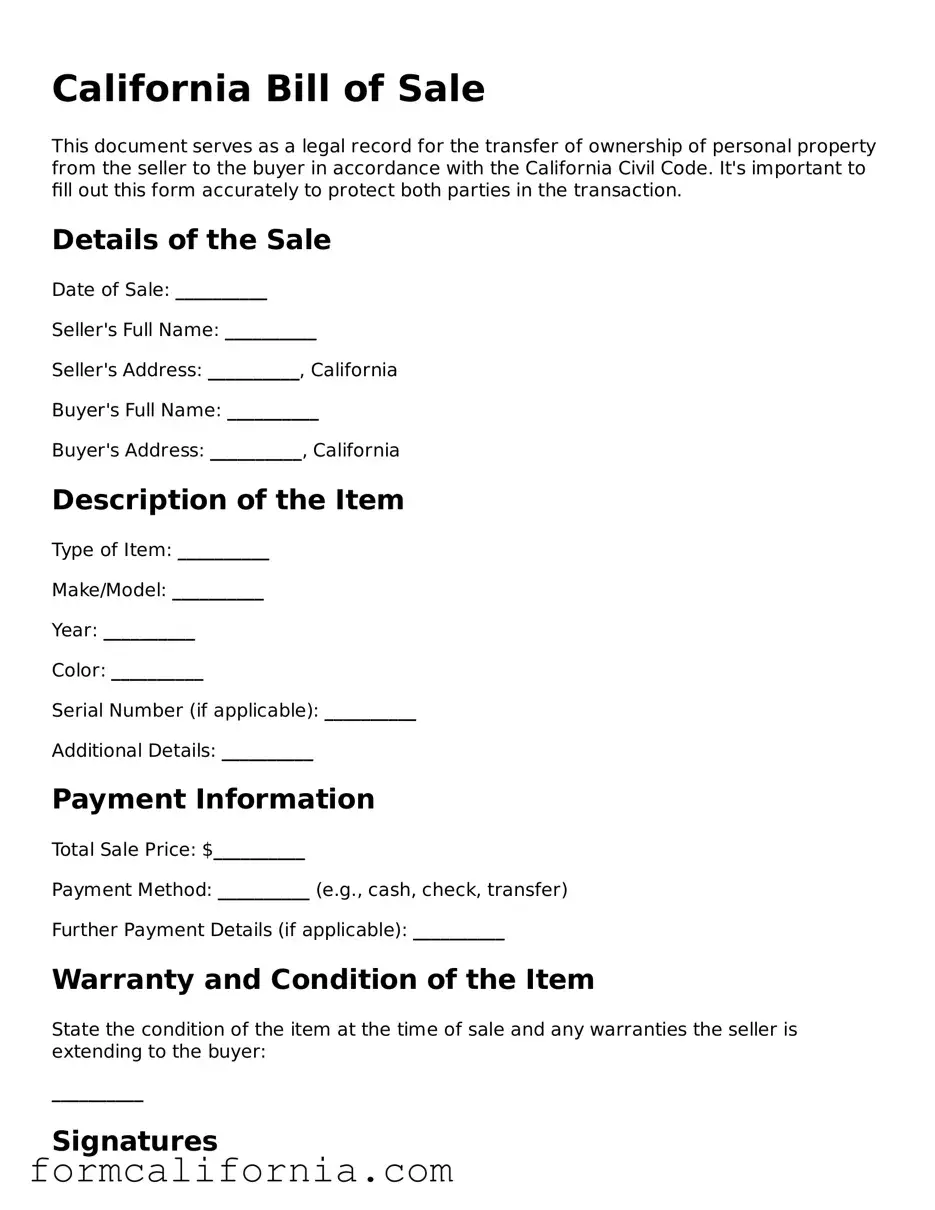California Bill of Sale
This document serves as a legal record for the transfer of ownership of personal property from the seller to the buyer in accordance with the California Civil Code. It's important to fill out this form accurately to protect both parties in the transaction.
Details of the Sale
Date of Sale: __________
Seller's Full Name: __________
Seller's Address: __________, California
Buyer's Full Name: __________
Buyer's Address: __________, California
Description of the Item
Type of Item: __________
Make/Model: __________
Year: __________
Color: __________
Serial Number (if applicable): __________
Additional Details: __________
Payment Information
Total Sale Price: $__________
Payment Method: __________ (e.g., cash, check, transfer)
Further Payment Details (if applicable): __________
Warranty and Condition of the Item
State the condition of the item at the time of sale and any warranties the seller is extending to the buyer:
__________
Signatures
By signing below, the seller and the buyer acknowledge that the sale is final, and the item is sold "as-is" unless otherwise noted. Both parties confirm that the information above is accurate and complete, and that the transfer of ownership complies with California law.
Seller's Signature: __________ Date: __________
Buyer's Signature: __________ Date: __________
Witness (if applicable)
Name: __________
Signature: __________ Date: __________
Note: While a witness is not mandatory under California law, having a third-party witness sign this document can provide additional legal protection to both the seller and the buyer.
